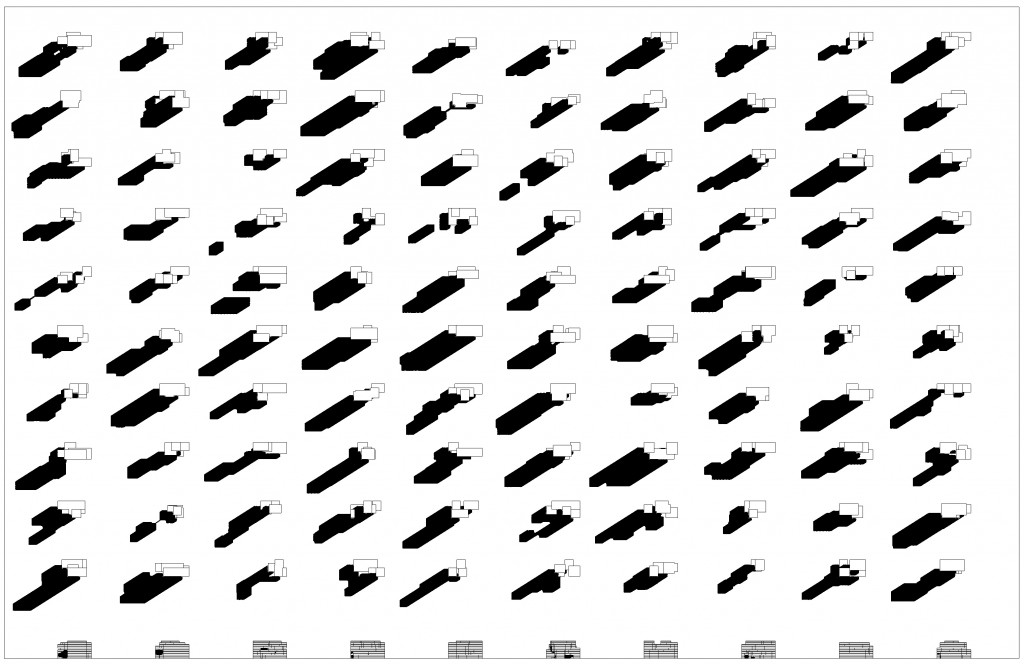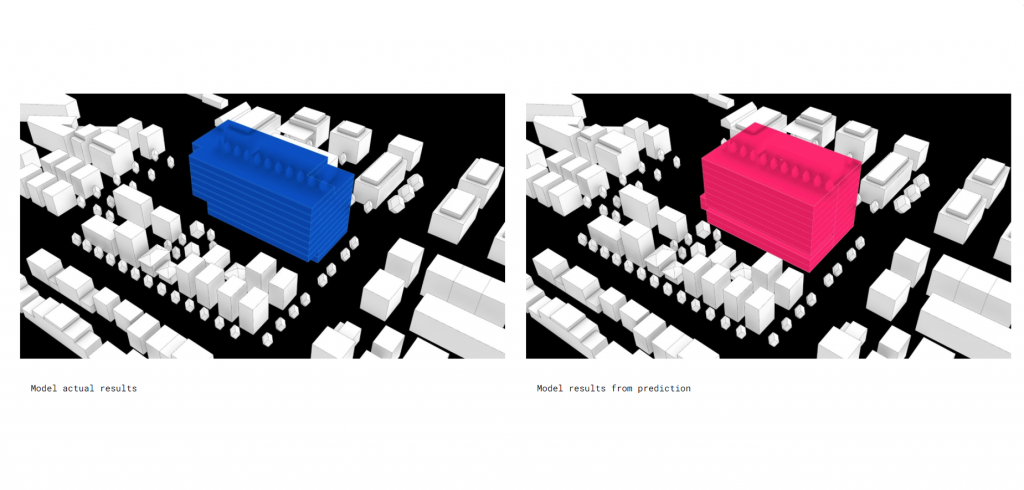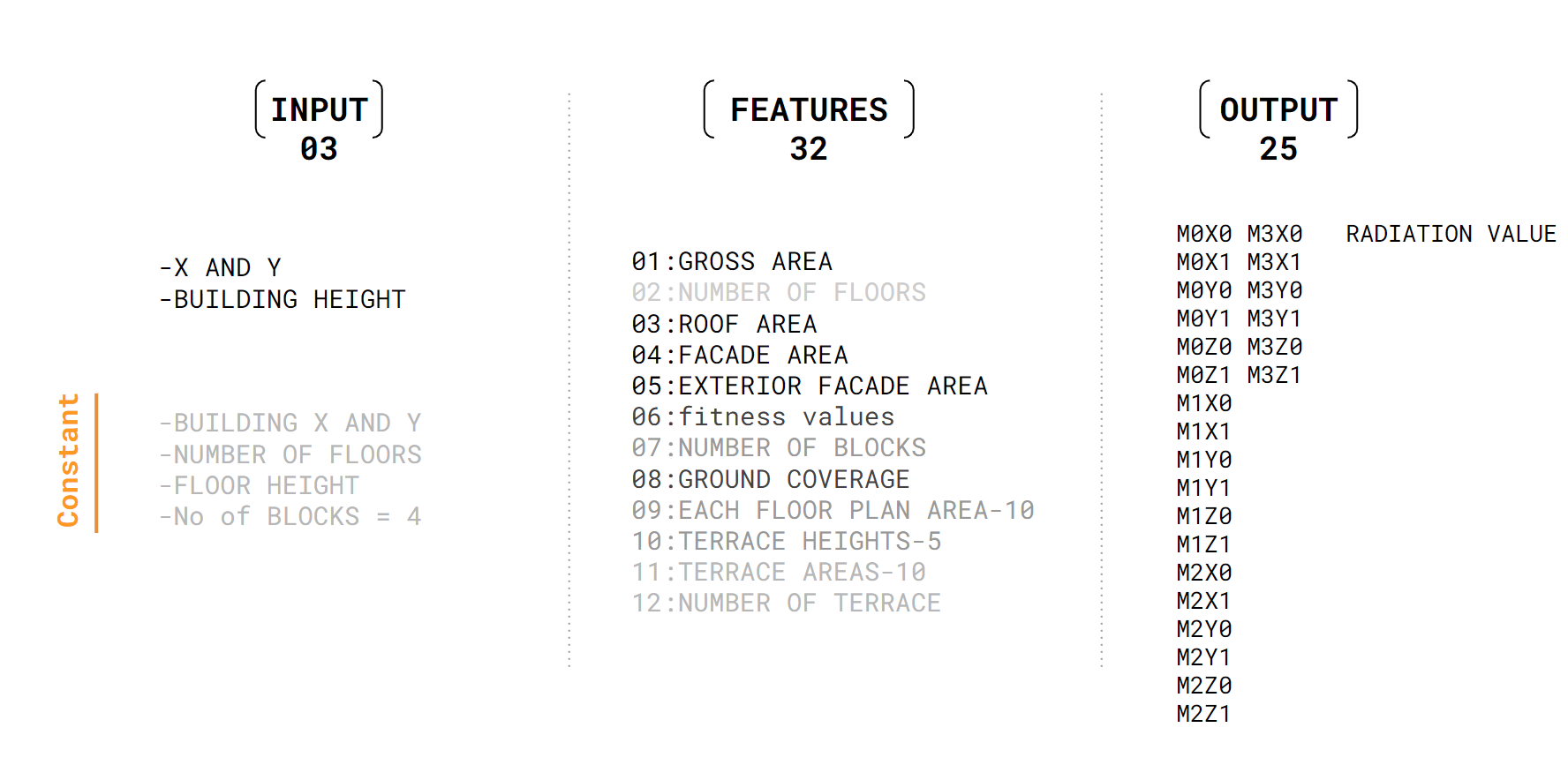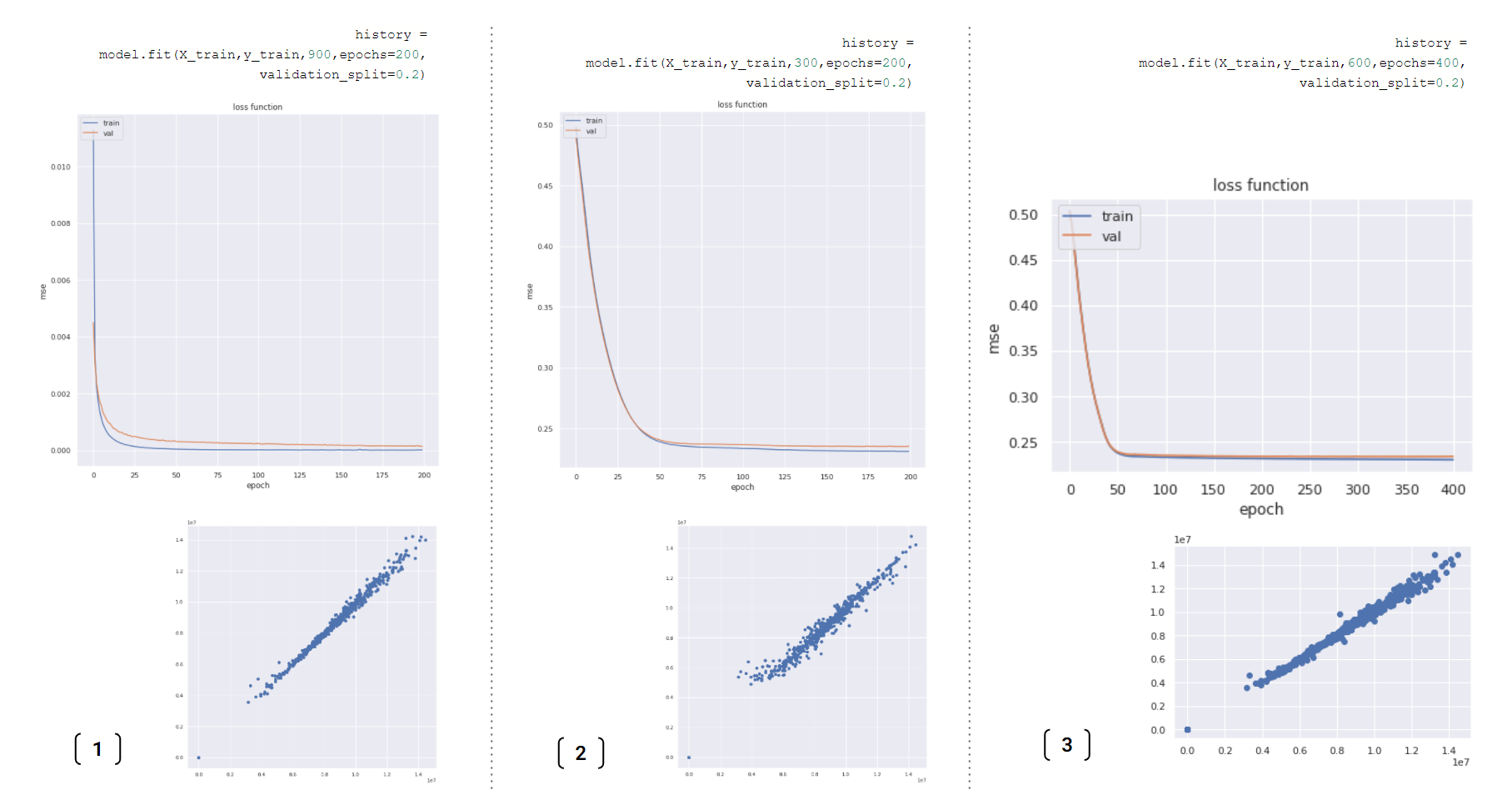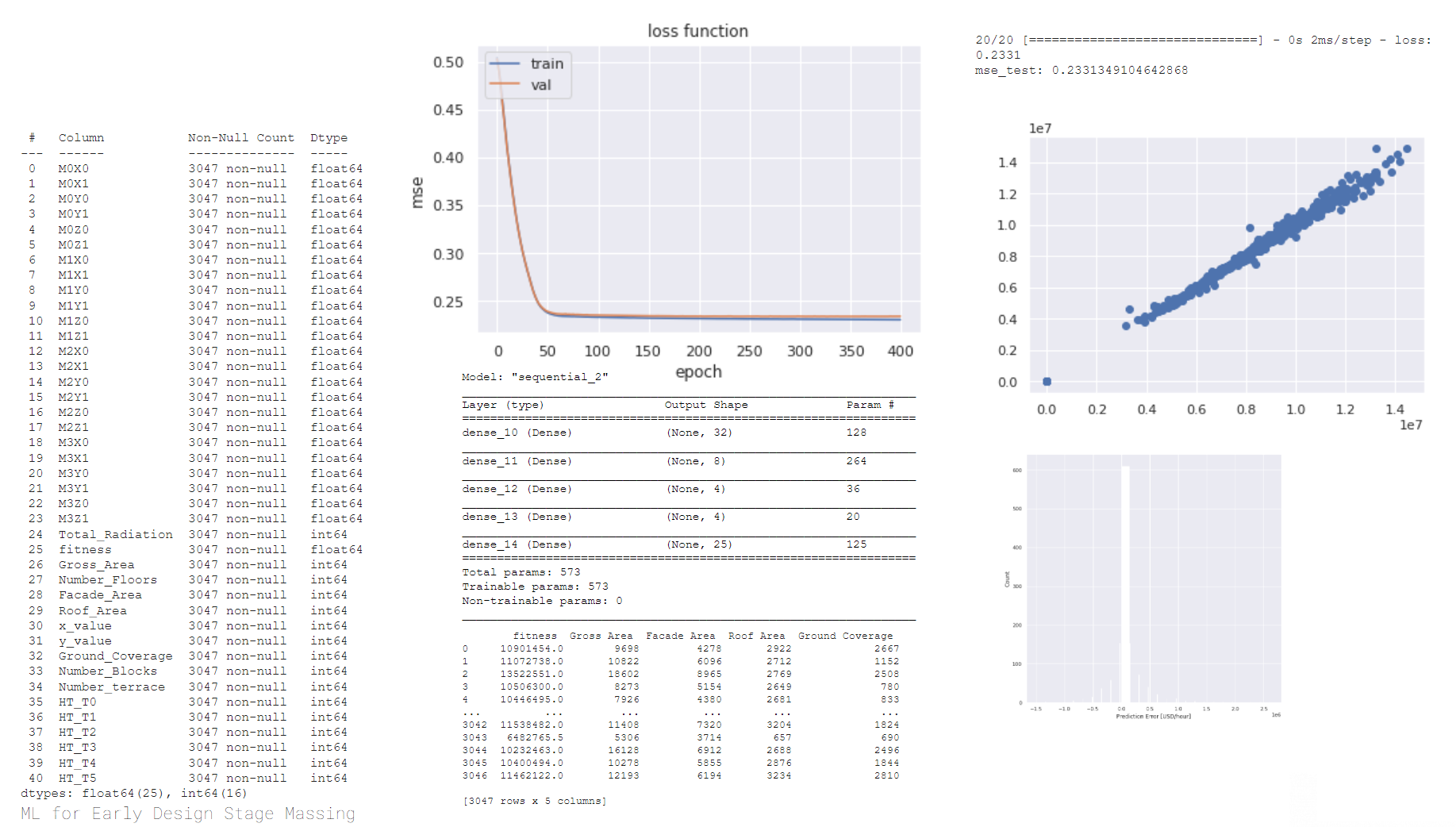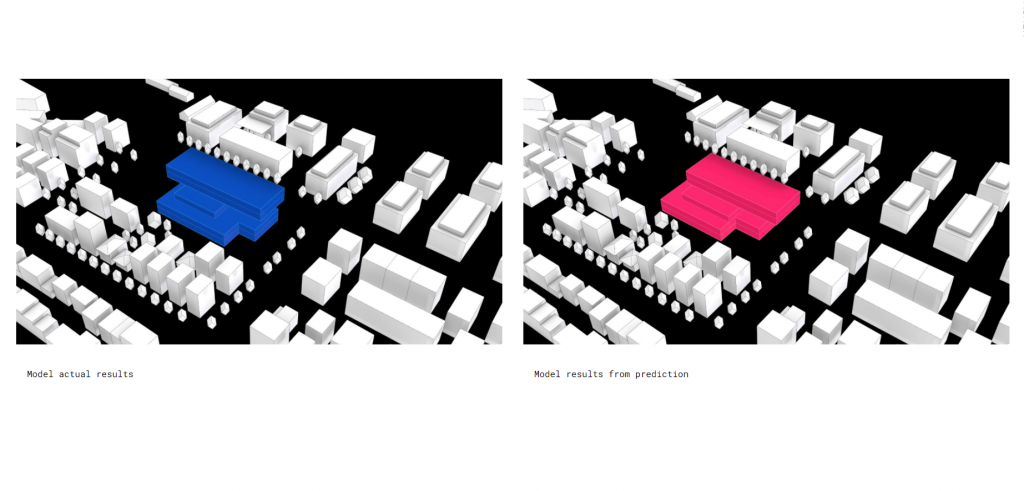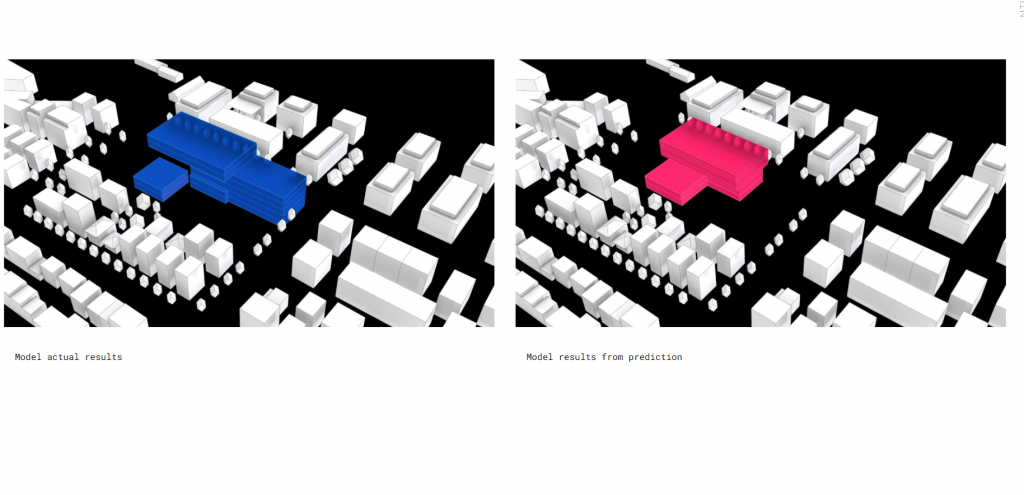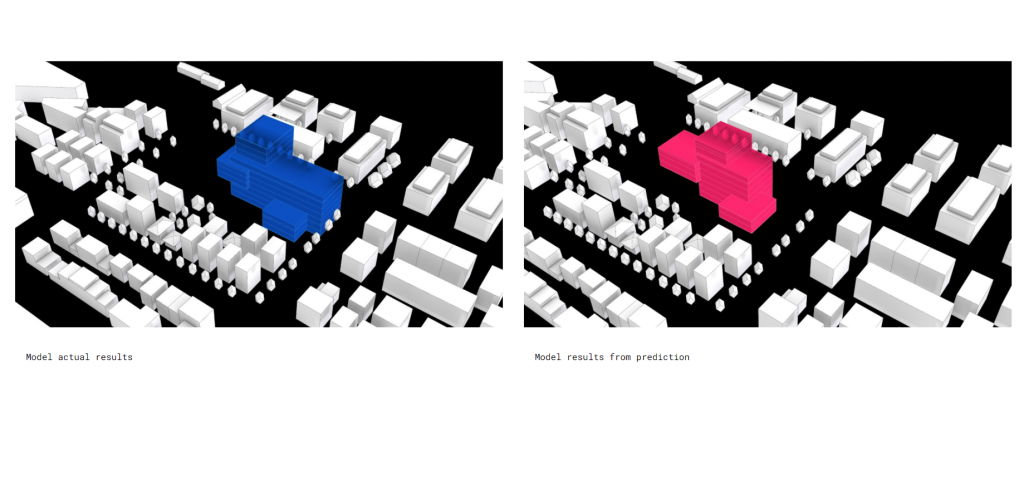Predict Early Design Stage Massing using Machine Learning
Abstract
The use of machine learning in architecture can be seen as a paradigm shift in the way we approach and design architecture. The capacity to simplify some processes can be an enormous advantage for our industry. With that in mind, our seminar project intends to explore how machine learning, through performance analysis, can be applied in the early design stage. In the seminar for Computer Vision at IAAC, we have had a special focus in radiation performances, with the hope that this can be a beginning for us of a series of other building performance analyses that could be integrated together.

Idea
The idea for the project involved predicting quick performance based massing results for design exploration in the conceptual stage.
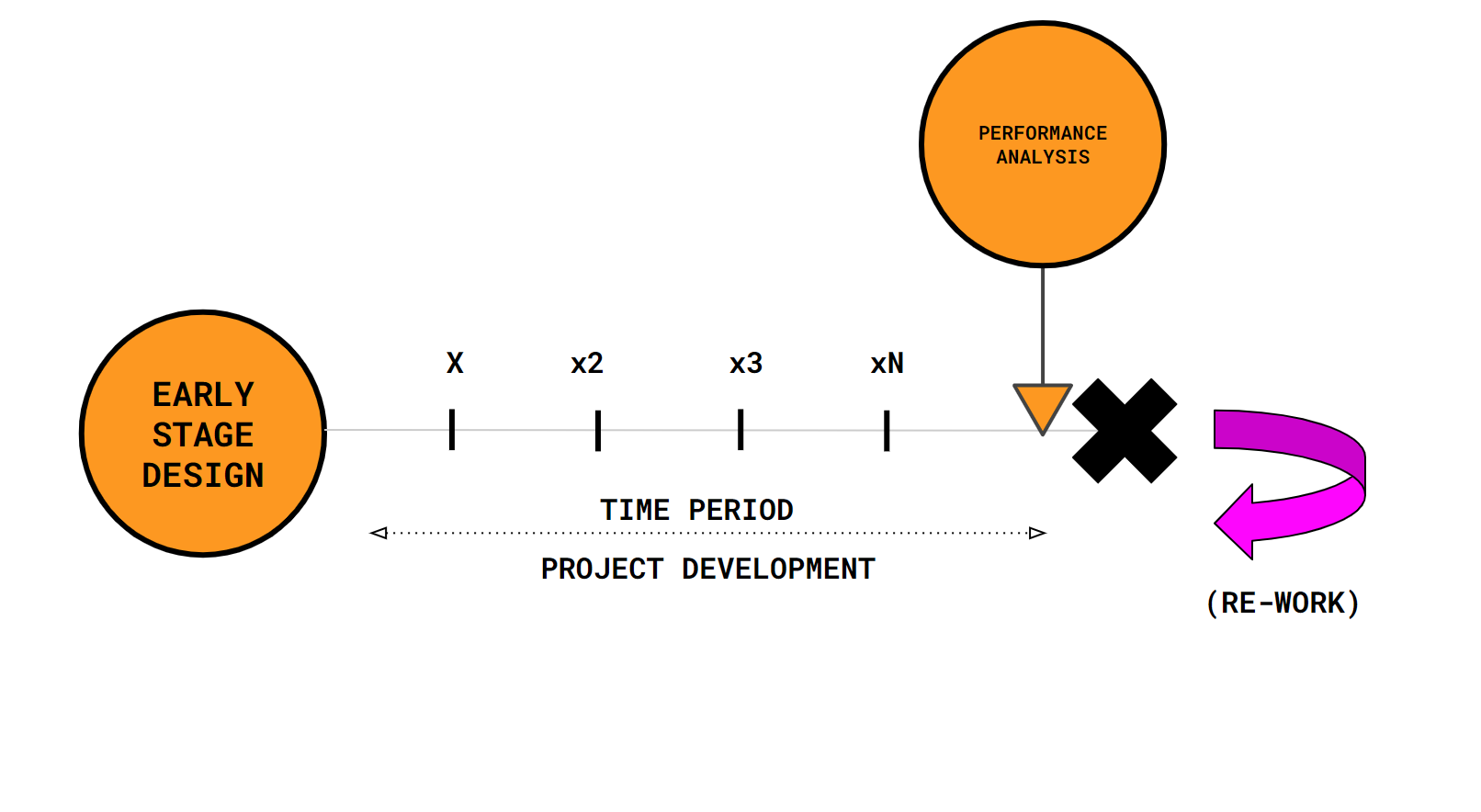
Approach
Dataset Creation
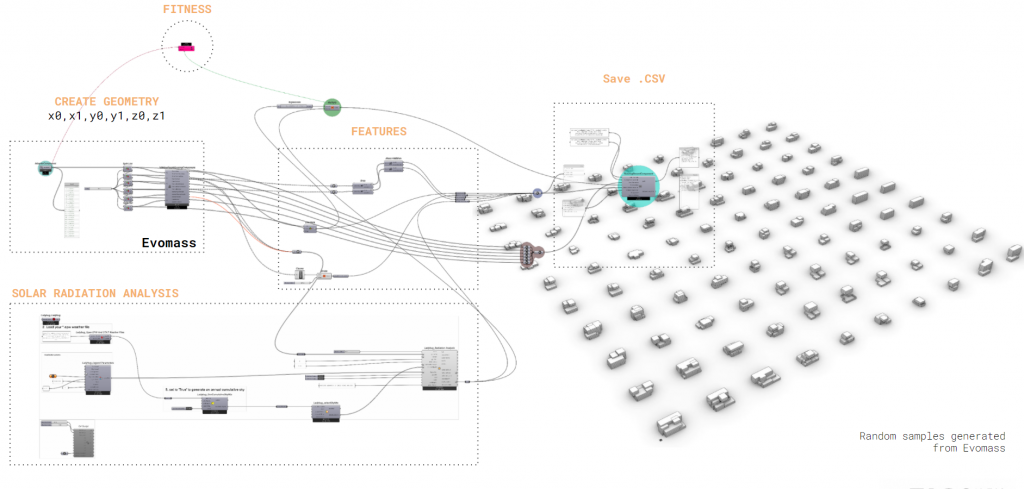
Significant research has been undertaken focusing on the application of evolutionary algorithms for design exploration at conceptual design stages. However, standard evolutionary algorithms are typically not well-suited to supporting such optimization-based design exploration due to the lack of design diversity in the optimization result and the poor search efficiency in discovering high-performing design solutions. In order to find a new solution to the problem our approach to the design problem was to use the steady-stage island evolutionary algorithm (SSIEA) proposed by Likai Wang, Patrik Janssen and Guohua Ji in the paper “Wang L, Janssen P, Ji G (2020). SSIEA: a hybrid evolutionary algorithm for supporting conceptual architectural design. Artificial Intelligence for Engineering Design, Analysis and Manufacturing 1–19.
https://doi.org/10.1017/S0890060420000281”
Methodology
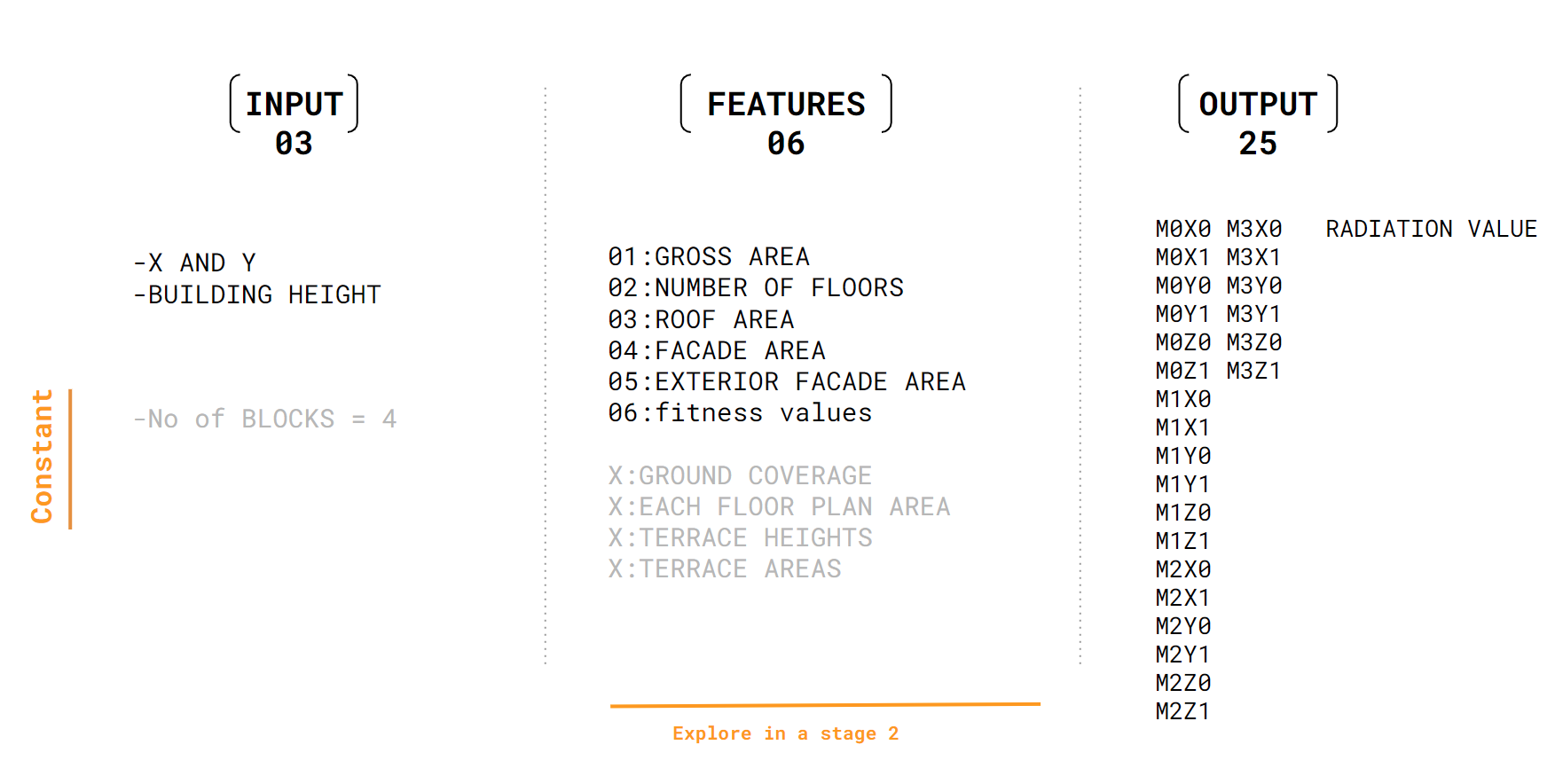
Having as a starting point the idea of an urban block, our approach started with the creation of our dataset based on ‘SSIEA’, to generate samples for ML with well defined fewer inputs and features. As inputs we have considered the XY span of the building and additive massing method to use four numbers of Blocks to generate the building volume. For features we have defined gross area, number of floors, facade area, roof area and fitness values. For output results,four masses M0,M1,M2, M3 and x,y points; x0,x1,y0,y1,z0,z1 we have 24 values along with radiation values. The output dataset is then analysed and trained to predict new results.

Training
Results
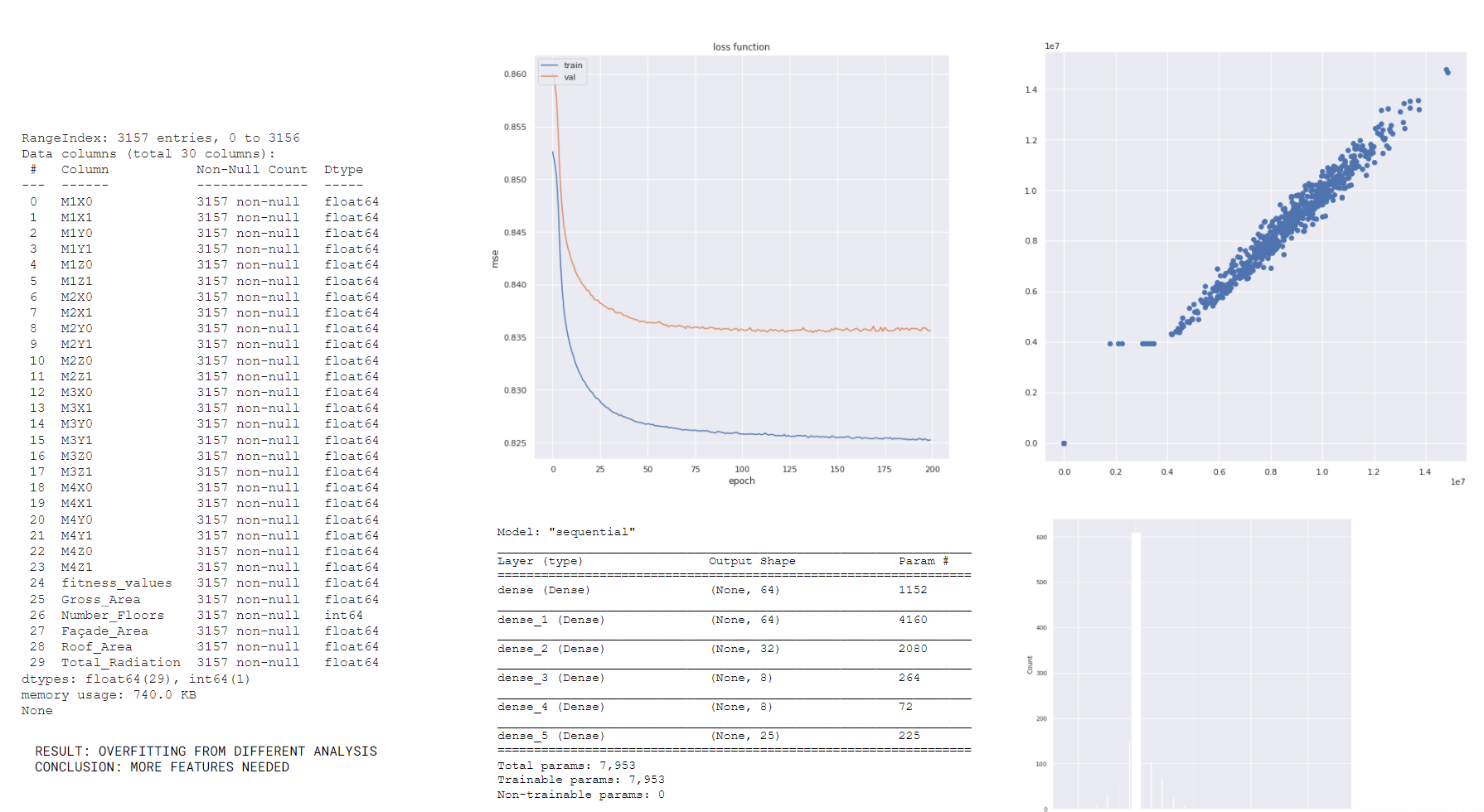
Geometry back to Grasshopper
Hops component

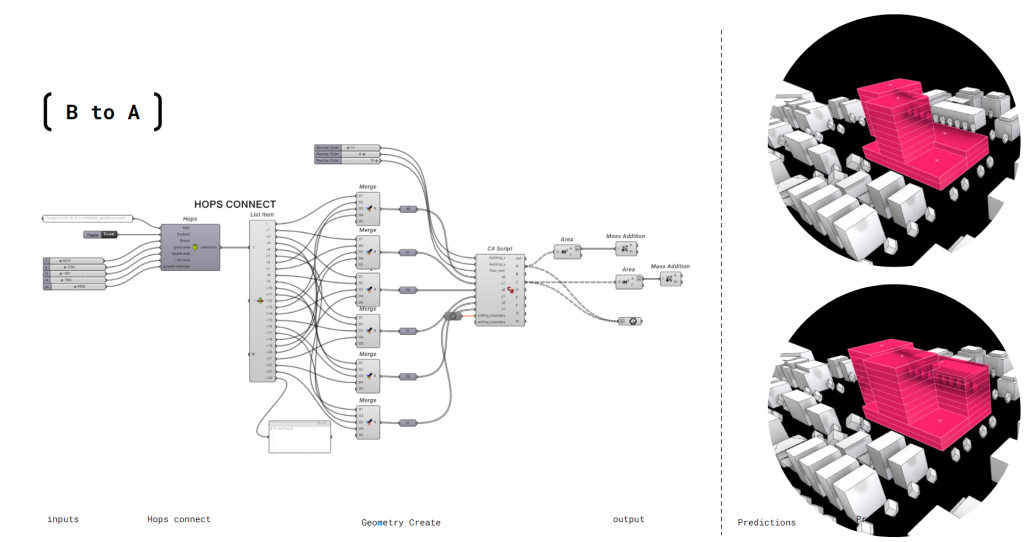
Predictions
Results
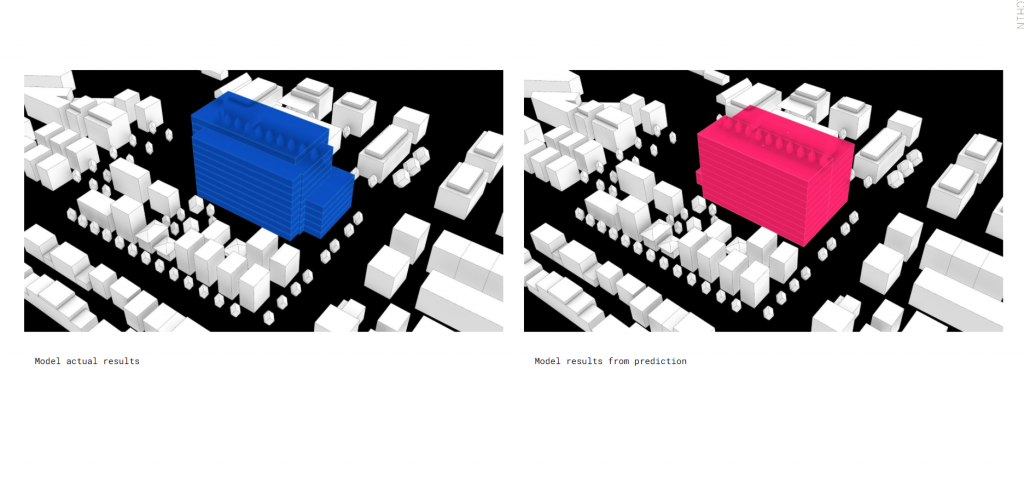
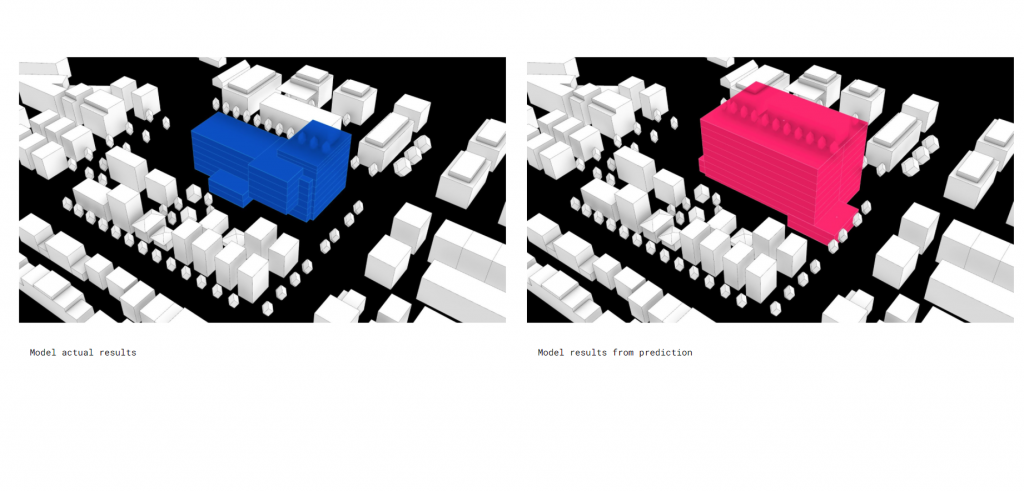
Conclusions
Results
From the first test, we can conclude that the model needs a wider dataset (more features ) to identify the relationships between inputs and outputs better. Hence we need to revise the dataset and chart again.
Predictions
Results
Conclusions
Results
The features of the building like number of floors, each floor area, individual terrace areas do not contribute to the model and cause overfitting and seem to not affect the learning. With the conclusion from one first dataset,that more features are required for 25 outputs, we found adding more features didn’t improve the learning which suggests it needs more dataset samples and more variance. hyperparameters of the model: Although the default batch size kept giving overfit results, by increasing the batch size from 300 to 600 improved the model performance significantly. The radiation value results better than actual geometry which seems to suggest that the coordinates of the model need more precision.
Credits
IAAC, MaCAD 2020-2021
ML to predict Early Stage Design Massing is a project of IAAC, Institute for Advanced Architecture of Catalonia developed in the MaCAD 2020/21 by Students: Sachin Dabas and Pedro Ribeiro and Faculty: Gabriella Rossi and Iliana Papadopoulou.
